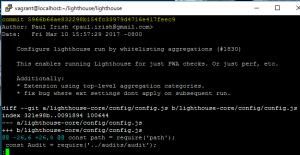-How the table displays changes
-How a user can add a new note
-Saving and persisting changes
-Memory management
class CoreDataTableViewController: UITableViewController {
var fetchedResultsController : NSFetchedResultsController<NSFetchRequestsResult>?{
didSet {
fetchedResultsController?.delegate = self
executeSearch()
tableView.reloadData()
}
}
init(fetchedResultsController fc : NSFetchedResultsController<NSFetchRequestResult>, style: UITableViewStyle = .plain){
fetchedResultsController = fc
super.init(style: style)
}
required init?(coder aDecoder: NSCoder){
super.init(coder: aDecoder)
}
}
class NotebooksViewController: CoreDataTableViewController {
// MARK: Life Cycle
overeride func viewDidLoad(){
super.viewDidLoad()
title = "CoolNotes"
let delegate = UIApplication.shared.delegate as! AppDelegate
let stack = delegate.stack
let fr = NSFetchRequest<NSFetchRequestResult>(entityName: "Notebook")
fr.sortDescriptors = [NSSortDescriptor(key: "name", ascending: true), NSSortDescriptor(key: "creationDate", ascending: false)]
fetchedResultsController = NSFetchedResultsController(fetchRequest: fr, managedObjectContext: stack.context, sectionNameKeyPath: nil, cacheName: nil)
}
override func tableView(_ tableView: UITableView, cellForRowAt indexPath: IndexPath) -> UITableViewCell {
let nb = fetchedResultsController!.object(at: indexPath) as! Notebook
let cell = tableView.dequeueReusableCell(withIdentifier: "NotebookCell", for: indexPath)
cell.textLabel?.text = nb.name
cell.detailTextLabel?.text = "\(nb.notes!.count) notes"
return cell
}
}

